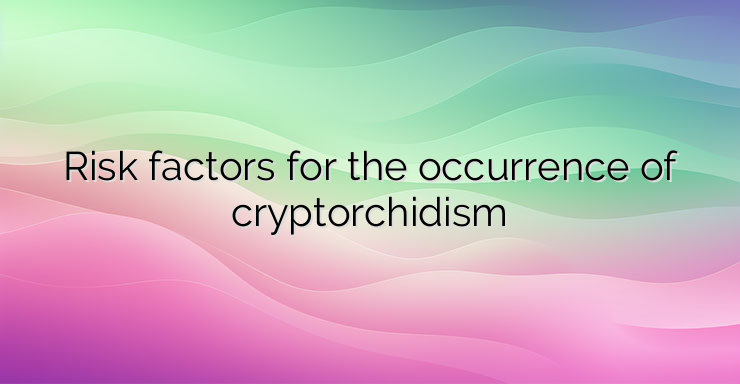The absence of even one testicle in the scrotum due to impaired descent into the scrotal sac is defined as cryptorchidism. It is the most common birth defect affecting the male genitalia. During the intrauterine development of boys, the testicles form in the abdominal cavity, near the kidney, after which they usually descend into the scrotum by the 7th month of pregnancy. About 3% of full-term and 30% of premature male babies are born with one or two undescended testicles. Approximately 80% of retained testes descend by the third month of life. This makes the true incidence of the violation about 1%. Cryptorchidism can be seen in one or both scrotal halves, but more often affects the right testicle. The testicle can be retained anywhere along the “path of descent”. An undescended testis can usually be palpated in the inguinal canal. In a minority of patients, the missing testicle may be located in the abdomen or completely absent. Undescended testes are associated with reduced fertility, increased risk of testicular germ cell tumors (overall risk less than 1%), testicular torsion, inguinal hernia, and psychological problems. Cryptorchidism can occur on one or both sides of the scrotum, but more often affects the right testicle. Bilateral cryptorchidism is present in about 10% of all patients with undescended testes. An undescended testicle may descend during the first three months of life without surgical correction. If the testis has not migrated to the scrotal sac by six months of age, it is unlikely to occur spontaneously and surgical correction should be considered. Undescended testes can be corrected with orchidopexy to reduce the risks of cryptorchidism. Cryptorchidism, hypospadias, testicular cancer, and poor semen quality (absence of germ cells that are necessary for sperm production) make up testicular dysgenesis syndrome (TDS). It is believed that the occurrence of this syndrome is due to harmful environmental factors that disrupt the embryonic development of the gonads (the testes – the male sex glands in which the sex cells/gametes are formed). Cryptorchidism is associated with male infertility due to poor sperm quality in adults. In cryptorchidism, the function of the Sertoli cells is impaired, and probably also the function of the Leydig cells. From 10% to 30% of patients with unilateral undescended testis develop infertility. The risk increases to 35% to 65% or more for bilateral cryptorchidism. If bilateral undescended testes are left untreated, the rate of infertility rises to over 90%. The correct functioning of the hypothalamus-pituitary-testis system (the endocrine gonadal axis, regulating the sexual function in the male body) is a prerequisite for normal descent of the testicles. Birth weight appears to be the main risk factor for undescended testes,followed by family history (cases of disease in the family). In full-term infants, the cause of cryptorchidism often cannot be determined. It is believed that genetic predisposition combined with environmental factors can disrupt the balance of hormones and cause physical changes that affect the development and origin of the testicles. Possible major risk factors for the occurrence of cryptorchidism include: Prematurity, birth before testicular descent; Low birth weight; Disorders of the endocrine system that can interfere with the normal fetal hormonal balance; Maternal obesity; Maternal diabetes; Maternal exposure to diethylstilbestrol; Exposure to pesticides; Alcohol consumption during pregnancy; Cigarette smoking; A case of cryptorchidism in the family; Exposure to phthalate (DEHP); Taking ibuprofen; Preeclampsia (the more severe the preeclampsia, the greater the risk of cryptorchidism); Congenital malformation syndromes – Down syndrome, Prader-Willi syndrome and Noonan syndrome; Persistent Mullerian duct syndrome; In vitro fertilization. The absence of an appendix testis (a round body in the region of the upper pole, slightly below the head of the epididymis) is associated with the occurrence of undescended testes. The exact role of the testicular appendix in testicular descent is not clear. References: 1. PubMed. Khatwa UA, Menon PS. Management of undescended testis 2. Kolon TF, Herndon CD, Baker LA, Baskin LS, Baxter CG, Cheng EY, Diaz M, Lee PA, Seashore CJ, Tasian GE, Barthold JS., American Urological Association. Evaluation and treatment of cryptorchidism: AUA guideline 3. Braga LH, Lorenzo AJ, Romao RLP. Canadian Urological Association-Pediatric Urologists of Canada (CUA-PUC) guideline for the diagnosis, management, and followup of cryptorchidism 4. Hadziselimovic F. On the descent of the epididymo-testicular unit, cryptorchidism, and prevention of infertilityThe absence of an appendix testis (a round body in the region of the upper pole, slightly below the head of the epididymis) is associated with the occurrence of undescended testes. The exact role of the testicular appendix in testicular descent is not clear. References: 1. PubMed. Khatwa UA, Menon PS. Management of undescended testis 2. Kolon TF, Herndon CD, Baker LA, Baskin LS, Baxter CG, Cheng EY, Diaz M, Lee PA, Seashore CJ, Tasian GE, Barthold JS., American Urological Association. Evaluation and treatment of cryptorchidism: AUA guideline 3. Braga LH, Lorenzo AJ, Romao RLP. Canadian Urological Association-Pediatric Urologists of Canada (CUA-PUC) guideline for the diagnosis, management, and followup of cryptorchidism 4. Hadziselimovic F. On the descent of the epididymo-testicular unit, cryptorchidism, and prevention of infertilityThe absence of an appendix testis (a round body in the region of the upper pole, slightly below the head of the epididymis) is associated with the occurrence of undescended testes. The exact role of the testicular appendix in testicular descent is not clear. References: 1. PubMed. Khatwa UA, Menon PS. Management of undescended testis 2. Kolon TF, Herndon CD, Baker LA, Baskin LS, Baxter CG, Cheng EY, Diaz M, Lee PA, Seashore CJ, Tasian GE, Barthold JS., American Urological Association. Evaluation and treatment of cryptorchidism: AUA guideline 3. Braga LH, Lorenzo AJ, Romao RLP. Canadian Urological Association-Pediatric Urologists of Canada (CUA-PUC) guideline for the diagnosis, management, and followup of cryptorchidism 4. Hadziselimovic F. On the descent of the epididymo-testicular unit, cryptorchidism, and prevention of infertility


Leave a Reply